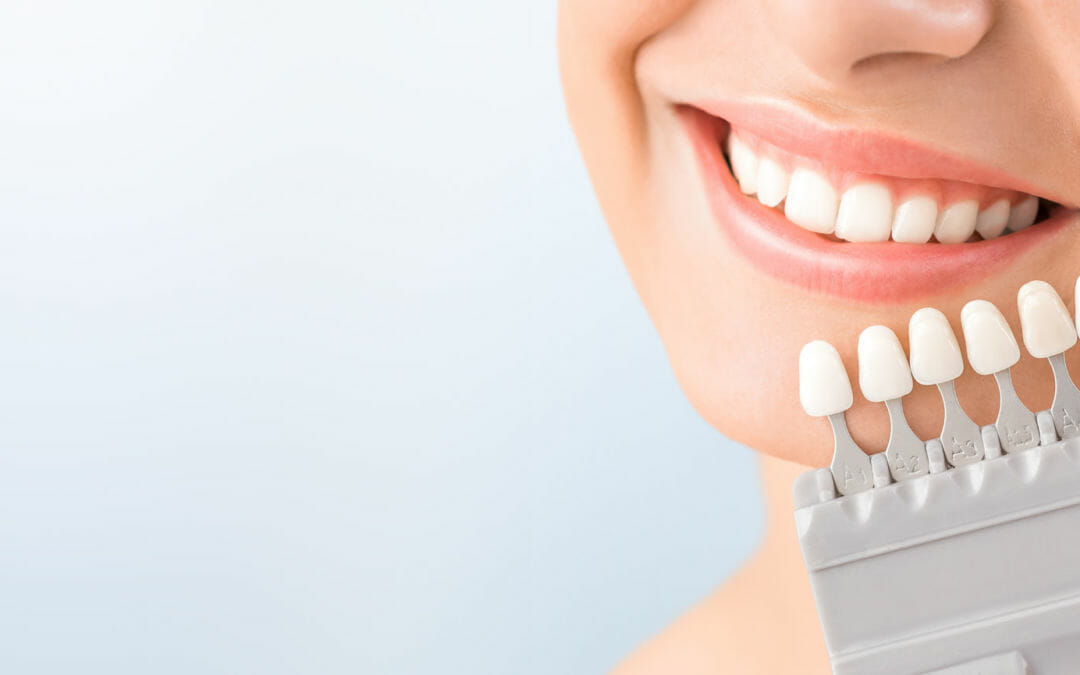A bright, white smile is something many of us strive for. But with so many different teeth whitening products and procedures available, it can take time to know where to start. This post will cover everything you need to know about teeth whitening. From understanding the science behind it to the different types of stains that can cause discoloration, we’ve got you covered. But before you get started on your journey to a brighter smile, it’s essential to understand the potential risks associated with teeth whitening and who should avoid it altogether. Lastly, we will provide tips on maintaining your bright smile post-whitening for longer-lasting results. Read on to discover everything you need to know about teeth whitening!
Understanding Teeth Whitening
Achieve a brighter smile with teeth whitening treatments. Learn about the different teeth whitening methods and how they work to remove stains. Discover the benefits of professional teeth whitening. Teeth whitening involves using abrasive substances or bleaching agents to lighten the color of natural teeth. Whitening gels, bleaching agents, and whitening pens are commonly used in dentistry. Tooth whitening can help remove extrinsic stains caused by factors like food, drink, tobacco, and poor oral hygiene. However, it may not be as effective for intrinsic stains caused by tooth decay or certain medications. While there may be some temporary discomfort or sensitivity during the process, teeth whitening is generally a safe procedure under professional supervision.
The Process of Teeth Whitening
In-office teeth whitening treatments performed by dentists offer an effective way to achieve a whiter smile. LED lights may enhance the whitening process during these treatments and deliver optimal results. You can safely remove surface stains and brighten your smile by utilizing ADA-approved whitening gels and following professional guidance. These gels contain active ingredients, such as hydrogen peroxide or carbamide peroxide, which penetrate the tooth enamel to break down stains. As a result, you can expect noticeable improvements in the shade of your teeth. While some individuals may experience temporary discomfort, the overall benefits of teeth whitening outweigh any potential side effects.
Extrinsic vs. Intrinsic Stains
Extrinsic stains, which affect the outer layer of the tooth, can often be easily removed through whitening treatments. On the other hand, intrinsic stains are embedded within the tooth and may require more intensive procedures to address them. Factors like trauma or certain medications can cause these stains. Common causes of extrinsic stains include coffee, tea, and red wine consumption. It is essential to understand the type of stain you have to choose the correct whitening method. You can determine the appropriate approach to achieve whiter teeth by identifying whether the stain is extrinsic or intrinsic.
In-Office Treatments
In-office teeth whitening treatments are performed by dental professionals who utilize more potent whitening agents to achieve dramatic results. These treatments can be customized by dentists to address individual needs and preferences. As part of the process, protective barriers are often used to safeguard the gums and other tissues. The dentist carefully monitors the entire procedure throughout the treatment to ensure safety and efficacy. By choosing in-office treatments, patients can benefit from the expertise of dental professionals and the use of professional-grade whitening agents. This approach is excellent for those seeking whiter teeth and a brighter smile. In-office treatments offer immediate and noticeable results under professional supervision.
Potential Side Effects and How to Avoid Them
Tooth sensitivity, a common side effect of teeth whitening treatments, can be managed effectively. Using desensitizing toothpaste or reducing the frequency of treatments helps alleviate sensitivity. Another potential side effect is gum irritation, which can be minimized by carefully applying the whitening solution to the teeth avoiding contact with the gums. Overusing whitening products can lead to enamel damage and increased tooth sensitivity, so following the recommended usage guidelines is essential. Consulting with a dentist before starting any whitening treatment is crucial as they can help identify potential risks and provide personalized advice. Lastly, maintaining proper oral hygiene practices, such as regular brushing, flossing, and dental check-ups, can help preserve the results of teeth whitening treatments.
Who Should Avoid Teeth Whitening?
Pregnant women should steer clear of teeth whitening due to potential risks. Individuals with sensitive teeth or gum disease may need to avoid whitening. Allergies to whitening agents call for refraining from treatments. Dental restorations like veneers or crowns might yield different results with whitening. Children under 16 should wait until their permanent teeth are fully developed.
Oral Hygiene Tips for Longer-Lasting Results
Maintaining the results of teeth whitening requires a consistent oral hygiene routine. Brushing your teeth at least twice daily with fluoride toothpaste is essential for preserving the whiteness. It helps remove surface stains and prevents new ones from forming. Flossing daily is equally important as it removes plaque and prevents discoloration between teeth. Using a mouthwash with whitening properties can further enhance the results by reducing bacteria and freshening breath.
Additionally, limiting the consumption of foods and drinks that can stain teeth, such as soda and berries, can help preserve the whiteness. Regular dental check-ups and cleanings are crucial for maintaining oral hygiene and the longevity of teeth whitening results. These visits allow a professional to assess your oral health and provide any necessary treatments or advice.
Conclusion
In conclusion, teeth whitening is a popular cosmetic procedure that can effectively enhance the appearance of your smile. Understanding the science behind teeth whitening and the different types of stains can help you choose the most appropriate method. It is important to consider the potential risks and side effects of teeth whitening and take necessary precautions to avoid them. Additionally, maintaining good oral hygiene practices can help prolong the results of your whitening treatment. Remember, it’s always best to consult with a dental professional before undergoing any teeth whitening procedure to ensure it is safe and suitable. Keep smiling bright!
Schedule an appointment with us today at Eastgate Dental Excellence!

